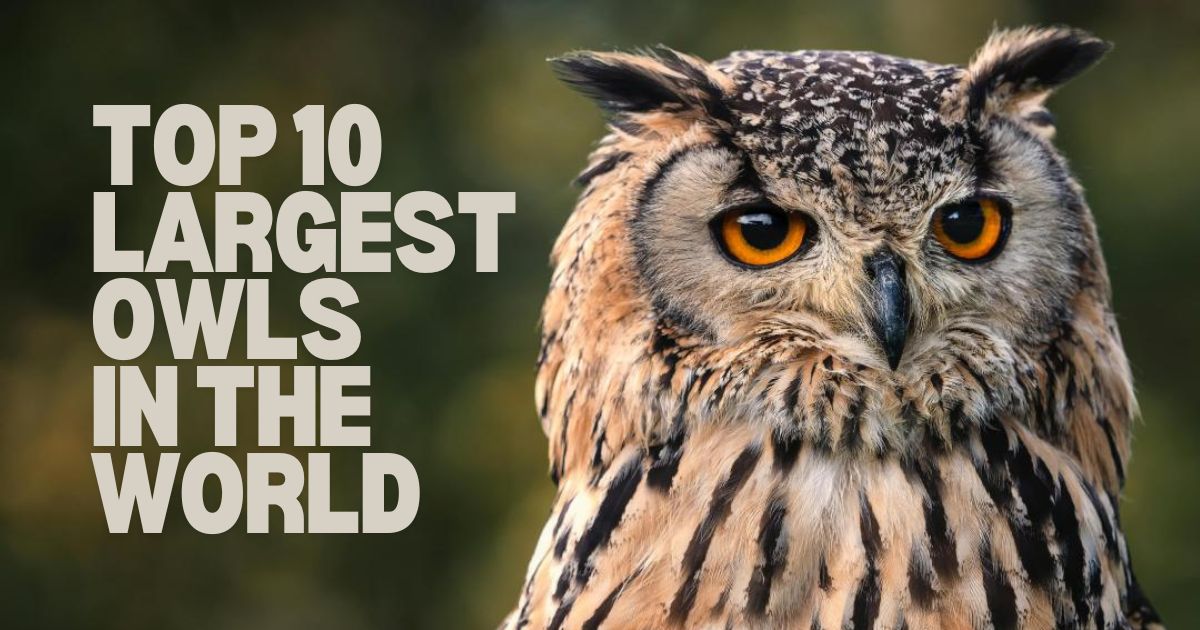Owls have always captivated the human imagination with their mysterious and nocturnal nature. These majestic birds of prey are known for their silent flight, acute senses, and impressive hunting skills. Among the diverse species of owls, some stand out due to their remarkable size. This article explores the largest owls in the world, exploring their physical characteristics, habitats, and key features. Let’s embark on a journey to discover these magnificent avian giants.
10. Magellanic Horned Owl
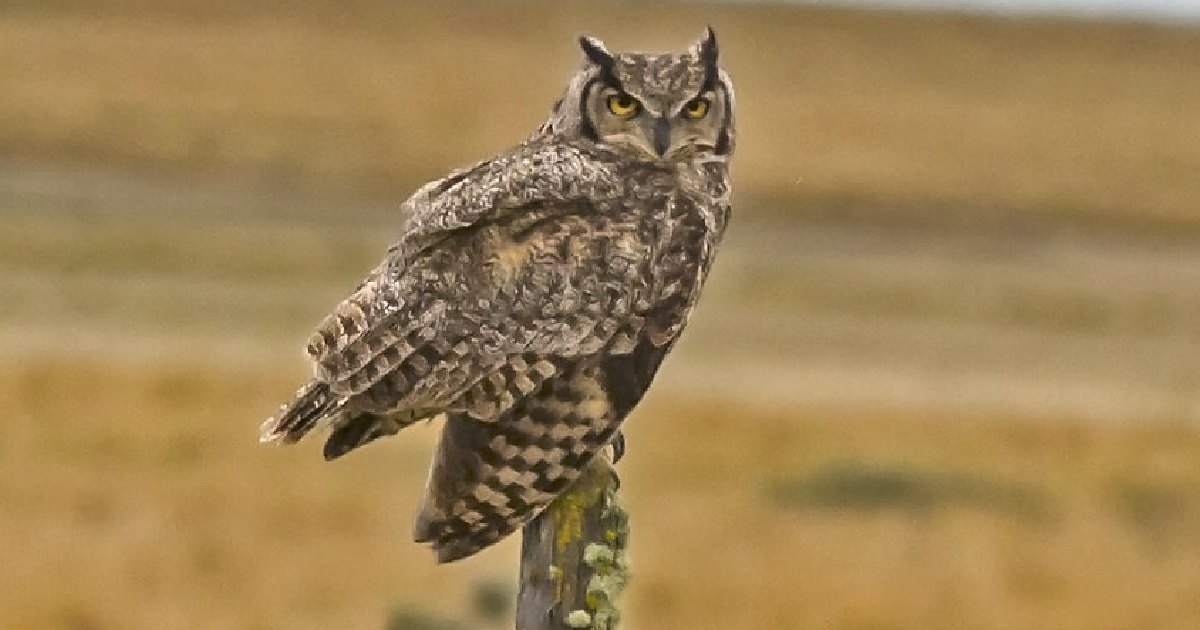
- Weight: 3.3 – 5.5 lbs
- Length: 18 – 23 inches
- Key Features: Distinctive ear tufts, Adaptable to various habitats
The Magellanic Horned Owl, also known as the lesser horned owl, is a large owl species native to South America. These owls are characterized by their prominent ear tufts and striking yellow eyes. They inhabit a wide range of environments, from dense forests to open grasslands and even urban areas. This adaptability has allowed them to thrive across a broad geographic range.
Their diet primarily consists of small mammals, birds, and insects. The Magellanic Horned Owl’s powerful talons and sharp beak make it an effective predator. These owls are known for their deep, resonant hoots, which they use to communicate with each other and establish territories. Despite their large size, they are skilled flyers, capable of navigating through dense foliage with ease.
9. Verreaux’s Eagle-Owl
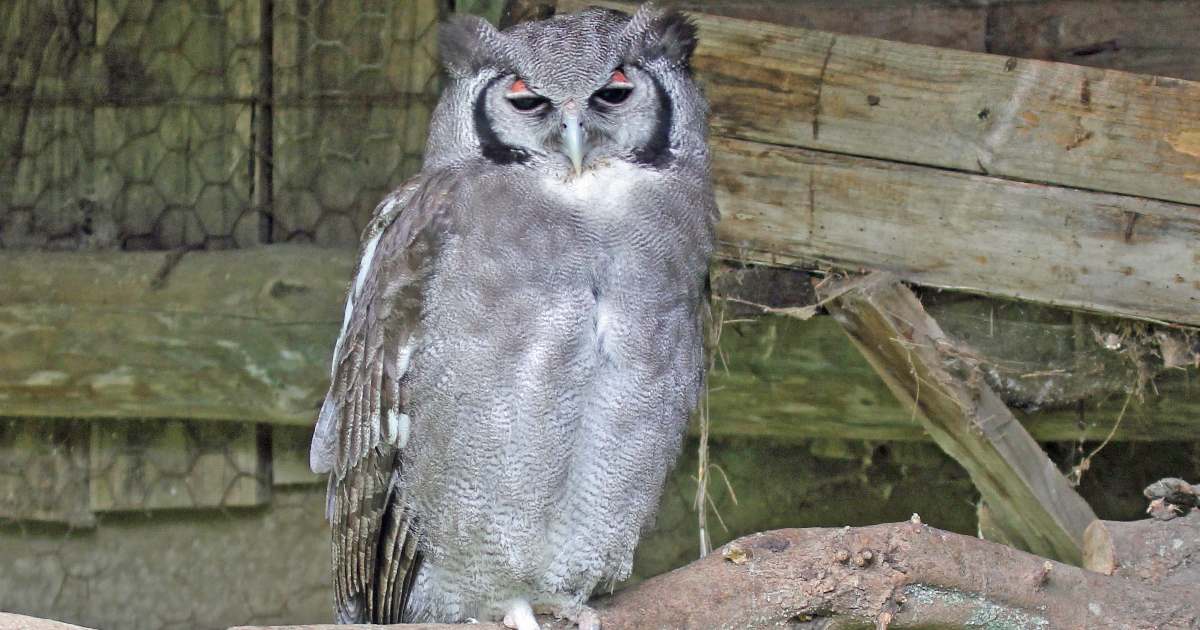
- Weight: 4.4 – 8.8 lbs
- Length: 26 – 28 inches
- Key Features: Large, pink eyelids, Found in sub-Saharan Africa
Verreaux’s eagle owl, also known as the milky eagle owl, is one of the largest owl species in Africa. These owls are easily recognizable by their large size and distinctive pink eyelids. They inhabit a variety of habitats, including savannas, woodlands, and forest edges, where they can find ample prey.
Their diet is diverse, consisting of mammals, birds, reptiles, and insects. Verreaux’s eagle owls are known for their powerful hunting abilities and are capable of taking down prey much larger than themselves. Their calls are deep and booming, often heard at night as they establish their territory. These owls play a crucial role in controlling the population of small mammals and other prey species in their habitats.
8. Cape Eagle-Owl
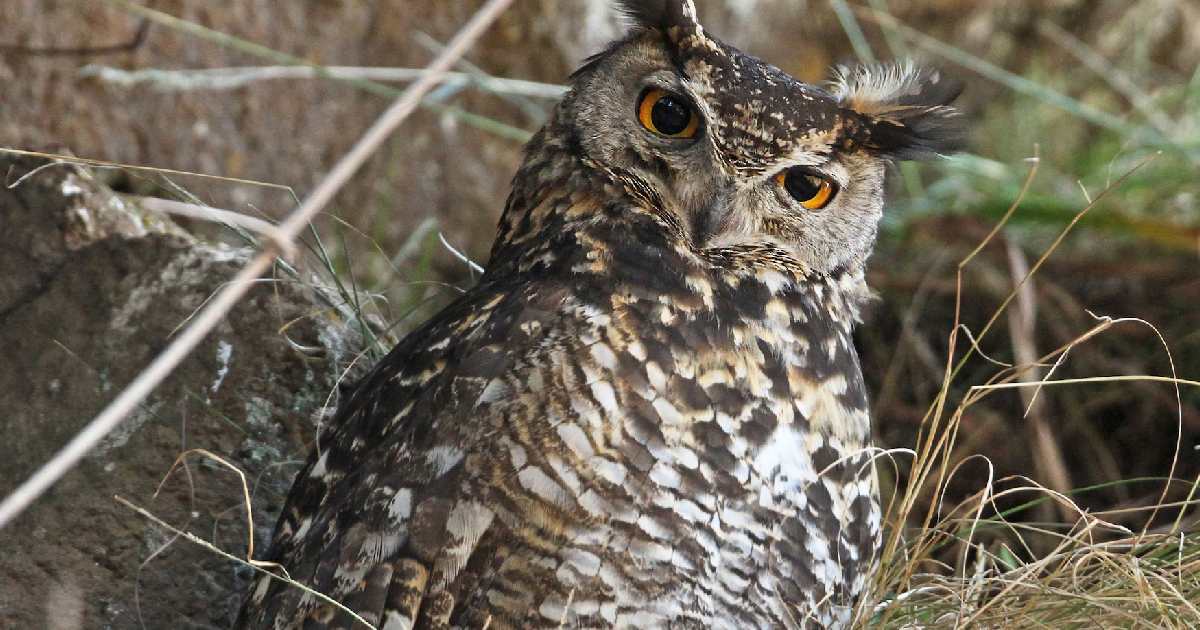
- Weight: 3.5 – 5.5 lbs
- Length: 20 – 24 inches
- Key Features: Bright orange eyes, Endemic to southern Africa
The Cape Eagle-Owl is a large and striking owl species found in southern Africa. These owls are known for their bright orange eyes and powerful build. They typically inhabit rocky outcrops, cliffs, and mountainous regions, where they can find shelter and hunting opportunities.
Cape eagle owls are formidable hunters, preying on a variety of mammals, birds, and reptiles. Their excellent night vision and acute hearing allow them to locate prey in complete darkness. These owls are also known for their distinctive hooting calls, which can be heard echoing through their rugged habitats. The Cape Eagle-Owl’s impressive size and striking appearance make it a captivating sight for bird enthusiasts.
7. Indian Eagle-Owl
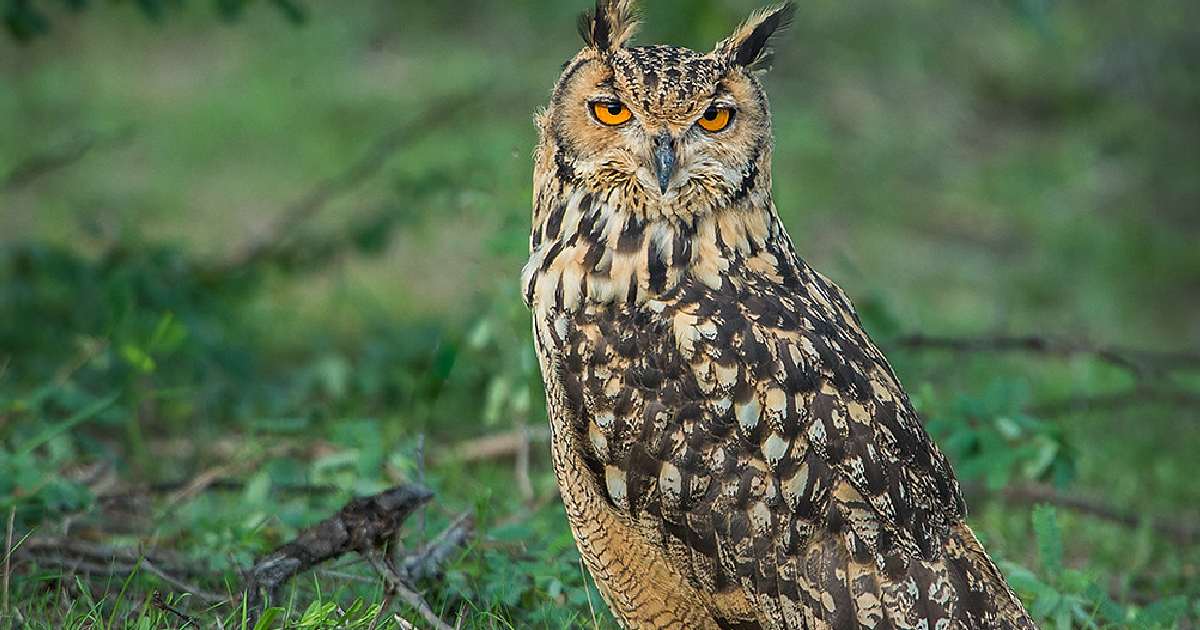
- Weight: 3.1 – 5.5 lbs
- Length: 20 – 22 inches
- Key Features: Prominent ear tufts, Found in the Indian subcontinent
The Indian Eagle-Owl, also known as the rock eagle-owl, is a large owl species native to the Indian subcontinent. These owls are easily identifiable by their prominent ear tufts and piercing yellow eyes. They inhabit a variety of environments, including forests, rocky landscapes, and scrublands, where they can find ample prey.
Their diet primarily consists of small mammals, birds, and insects. The Indian eagle owl is a powerful and agile hunter, capable of taking down prey larger than itself. These owls are also known for their deep, resonant hoots, which they use to communicate with each other and establish territories. Despite their large size, they are skilled flyers, capable of navigating through dense foliage with ease.
6. Pharaoh Eagle-Owl
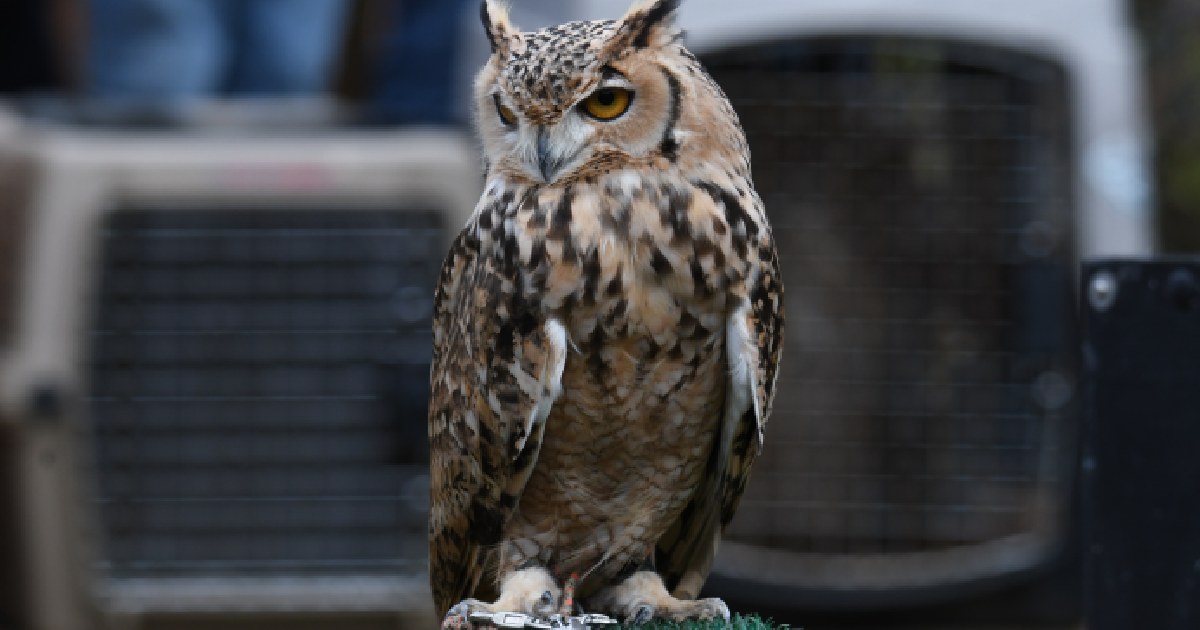
- Weight: 2.2 – 4.4 lbs
- Length: 18 – 24 inches
- Key Features: Distinctive facial disk, Found in North Africa and the Middle East
The Pharaoh Eagle-Owl, also known as the desert eagle-owl, is a large owl species found in North Africa and the Middle East. These owls are characterized by their distinctive facial disk and striking orange eyes. They inhabit deserts, rocky areas, and semi-arid regions, where they can find ample prey.
Their diet primarily consists of small mammals, birds, and insects. The Pharaoh Eagle-Owl is a powerful and agile hunter, capable of taking down prey larger than itself. These owls are also known for their deep, resonant hoots, which they use to communicate with each other and establish territories. Despite their large size, they are skilled flyers, capable of navigating through dense foliage with ease.
5. Snowy Owl
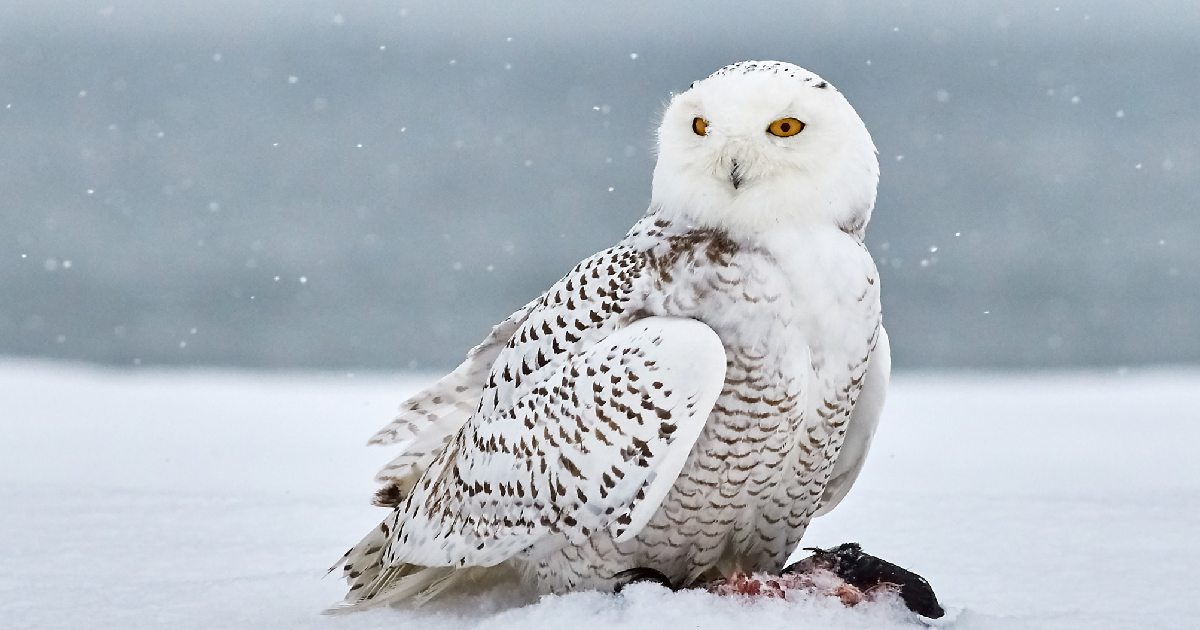
- Weight: 3.5 – 6.5 lbs
- Length: 20 – 28 inches
- Key Features: Pure white plumage, Found in the Arctic regions
The Snowy Owl is one of the most iconic and recognizable owl species, known for its pure white plumage and striking yellow eyes. These owls are native to the Arctic regions, where they inhabit tundra and open fields. The Snowy Owl’s thick feathers provide excellent insulation against the harsh, cold environments they call home.
Their diet primarily consists of small mammals, particularly lemmings, which they hunt with precision and efficiency. Snowy Owls are also known for their nomadic behavior, often traveling great distances in search of food. These owls are powerful flyers and can cover vast territories. The Snowy Owl’s majestic appearance and adaptability to extreme conditions make it a truly remarkable species.
4. Great Horned Owl

- Weight: 3.5 – 5.5 lbs
- Length: 18 – 25 inches
- Key Features: Versatile and adaptable, Found across the Americas
The Great Horned Owl is one of the most widespread and adaptable owl species, found throughout the Americas. These owls are easily recognizable by their prominent ear tufts and piercing yellow eyes. They inhabit a wide range of environments, including forests, deserts, wetlands, and urban areas.
Their diet is diverse, consisting of small mammals, birds, reptiles, and insects. The Great Horned Owl is a powerful and agile hunter, capable of taking down prey larger than itself. These owls are also known for their deep, resonant hoots, which they use to communicate with each other and establish territories. Despite their large size, they are skilled flyers, capable of navigating through dense foliage with ease.
3. Great Grey Owl
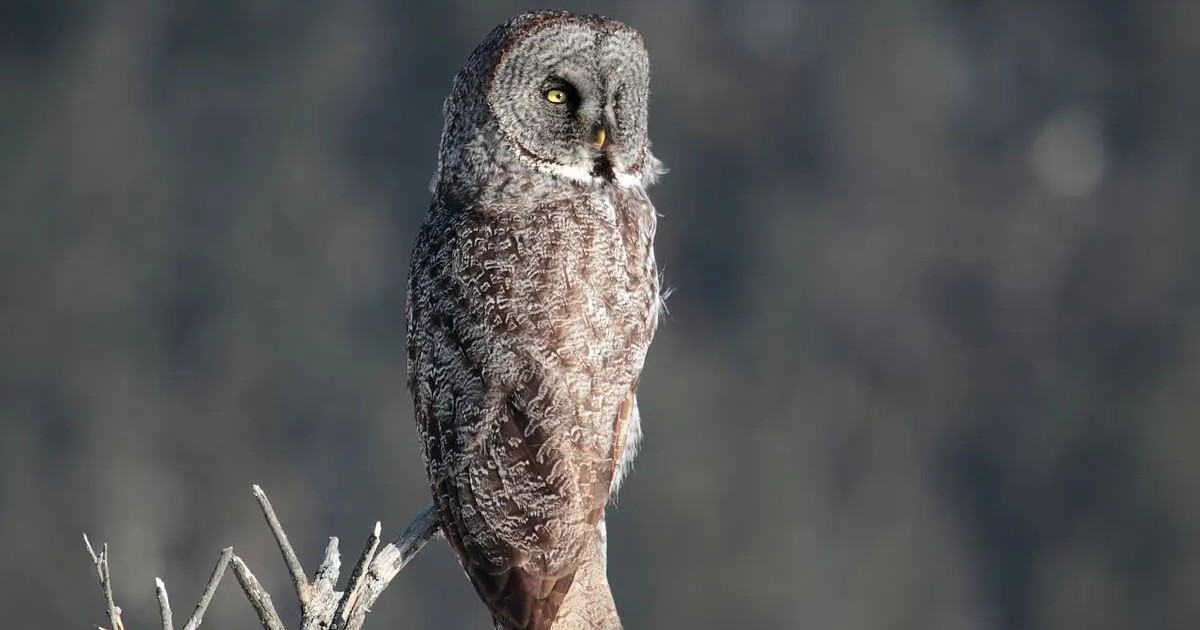
- Weight: 2.4 – 4.2 lbs
- Length: 24 – 33 inches
- Key Features: Large facial disk, Found in the Northern Hemisphere
The Great Grey Owl is one of the largest owl species in terms of length, known for its large facial disk and striking yellow eyes. These owls are found in the boreal forests and mountainous regions of the Northern Hemisphere, including North America, Europe, and Asia.
Their diet primarily consists of small mammals, particularly voles, which they hunt with precision and efficiency. Great Grey Owls are also known for their silent flight, which allows them to approach prey undetected. These owls are powerful flyers and can cover vast territories. The Great Grey Owl’s majestic appearance and adaptability to extreme conditions make it a truly remarkable species.
2. Blakiston’s Fish Owl
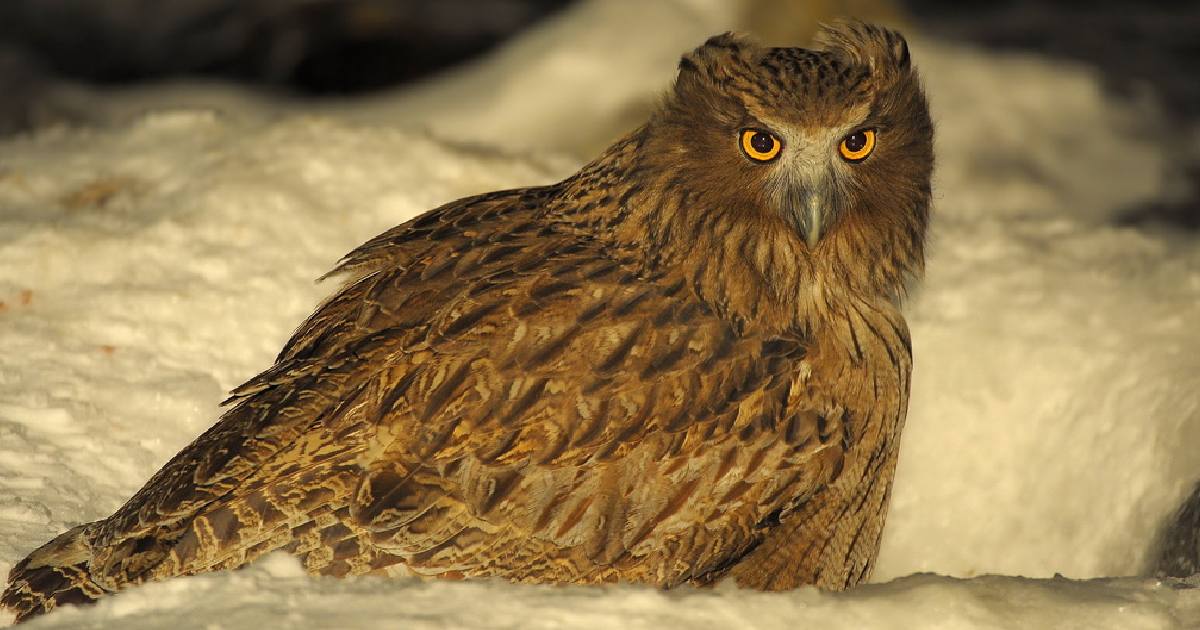
- Weight: 6.6 – 10 lbs
- Length: 24 – 30 inches
- Key Features: Large, tufted ears, Found in East Asia
Blakiston’s Fish Owl is one of the largest and heaviest owl species, known for its large, tufted ears and striking yellow eyes. These owls are native to East Asia, where they inhabit riparian habitats such as rivers, lakes, and wetlands. They are natural predators and powerful and agile hunters capable of taking down prey larger than itself.
Their diet primarily consists of fish, which they catch with their powerful talons. Blakiston’s Fish Owl is also known for its deep, resonant hoots, which they use to communicate with each other and establish territories. Despite their large size, they are skilled flyers, capable of navigating through dense foliage with ease. The Blakiston’s Fish Owl’s majestic appearance and adaptability to extreme conditions make it a truly remarkable species.
1. Eurasian Eagle-Owl

- Weight: 4.4 – 10 lbs
- Length: 24 – 30 inches
- Key Features: Found in Europe and Asia, Prefers forests and mountainous regions
The Eurasian Eagle-Owl is one of the world’s largest owl species, known for its large, tufted ears and striking orange eyes. These owls are native to Europe and Asia, where they inhabit forests, mountainous regions, and rocky outcrops. The Eurasian eagle owl is a powerful and agile hunter, capable of taking down prey larger than itself.
Their diet primarily consists of small prey animals like mammals, birds, and reptiles. The Eurasian eagle owl is also known for its deep, resonant hoots, which they use to communicate with each other and establish territories. Despite their large size, they are skilled flyers, capable of navigating through dense foliage with ease. The Eurasian eagle owl’s majestic appearance and adaptability to extreme conditions make it a truly remarkable species.
Conclusion
The largest owls in the world are truly magnificent creatures, each with its unique characteristics and adaptations. From the Arctic tundra to the forests of Asia and the savannas of Africa, these owls have evolved to thrive in a variety of environments. Their impressive size, powerful hunting abilities, and striking appearances make them a fascinating subject for bird enthusiasts and nature lovers alike. As we continue to study and protect these majestic birds, we can gain a deeper appreciation for the diversity and complexity of the natural world.
Frequently Asked Questions (FAQs)
What is the largest owl to ever exist?
The Eurasian eagle owl holds the title of the largest owl to ever exist. Known for its impressive size, this owl can weigh up to 10 pounds and measure up to 30 inches in length. Its wingspan can reach up to 6.6 feet, making it a formidable predator in its natural habitats across Europe and Asia. The Eurasian Eagle-Owl’s powerful build and striking orange eyes make it a standout among owl species.
How tall is the tallest owl?
The Eurasian Eagle-Owl is also the tallest owl, with a height of up to 30 inches. This impressive stature, combined with its large wingspan and weight, makes it one of the most formidable owls in the world. Its height allows it to dominate its environment, hunting a wide range of prey and thriving in diverse habitats, from forests to rocky outcrops across Europe and Asia.
How big are giant owls?
The giant eagle owl, such as the Eurasian eagle owl, is truly massive. They can weigh between 4.4 to 10 pounds and measure up to 30 inches in length. Their wingspan is equally impressive, often reaching up to 6.6 feet. These dimensions make them powerful predators capable of taking down large prey. Their size, strength, and striking features like tufted ears and bright eyes make them stand out in their habitats.
What is the largest owl in the UK?
The Eurasian Eagle-Owl is the largest owl found in the UK. This majestic bird can weigh up to 10 pounds and measure up to 30 inches in length, with a wingspan reaching up to 6.6 feet. Known for its powerful hunting abilities and striking appearance, the Eurasian eagle owl population has established itself in various parts of the UK, making it a remarkable sight for bird enthusiasts and nature lovers.
What are the two largest owls?
The two world’s largest owls are the Eurasian Eagle-Owl and Blakiston’s Fish Owl. The Eurasian eagle owls, with a weight of up to 10 pounds and a length of up to 30 inches, hold the title of the largest. The blakiston’s fish owls, found in East Asia, are also massive, weighing between 6.6 to 10 pounds and measuring up to 30 inches in length. Both species are known for their impressive size and powerful predatory skills.

